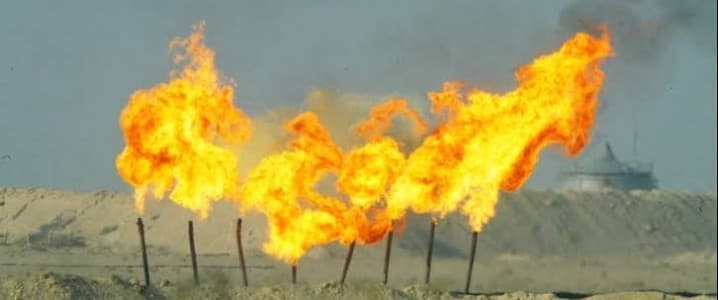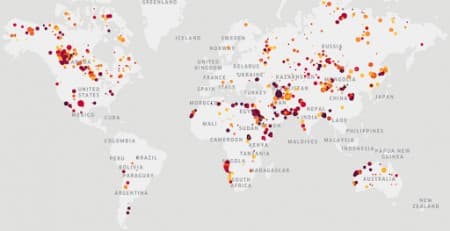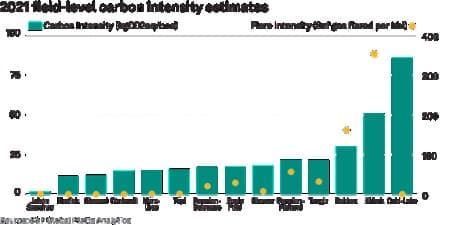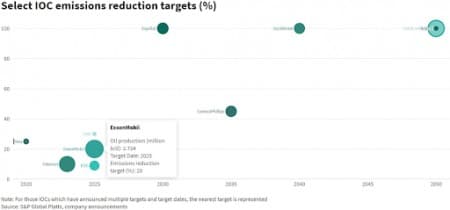Yves here. So you can’t say nothing came out of COP26, just not nearly enough. As this article shows, reducing methane emissions is the climate change low hanging fruit, not hard, not costly, and potentially even net profitable for producers. This action appears to follow an earlier UN report, which we discussed in May: Reducing Methane Is Crucial for Protecting Climate and Health, and It Can Pay for Itself – Yet Emissions Are Still Rising Fast, A New UN Report Warns.
So why wasn’t this done years ago? For instance, in 2014, Thomas Neuburger criticized the Obama climate plan for giving a big green light to fracking by ignoring methane emissions.
One therefore has to wonder what if anything is being done about emissions from fracking. One of Neuburger’s 2014 posts exposed how an official measure greatly undercounts methane emissions. Quoting in turn a Forbes story:
Methane emissions are worse than the conventional wisdom would have you believe, according to a new study by researchers at Stanford University.
Methane, which is the primary component of natural gas, is an especially powerful greenhouse gas, packing more than two dozen times as much global warming potential than carbon dioxide.
Traditionally, environmental regulators and energy industry groups have estimated methane emissions by multiplying the amount of methane emitted by a specific source – e.g., belching cattle or methane leaks at natural gas processing plants – by the number of that source type in a geographic region.
For example, imagine that a cow emits 1/10 of a metric ton of methane every year. If the United States has 10 cows, the total methane emissions attributable to cattle is one metric ton annually. By adding the total methane emissions from cattle with the totals from every other source of methane emissions, we can derive the total methane emissions for the United States.
That is how the U.S. Environmental Protection Agency has traditionally calculated methane emissions since the 1990s. If the methane emissions rates (e.g., how much methane does a cow emit in a year?) are wrong, the total estimated methane emissions are also wrong.
Several studies have tested the accuracy of these traditional methane emissions estimates by using airplanes and towers to measure actual methane in the air.
The new study, “Methane Leakage from North American Natural Gas Systems,” evaluated more than 200 of these atmospheric studies and concluded that the EPA’s methane emissions estimates are too low.
The key take-away: the EPA is likely underestimating U.S. methane emissions from natural gas by at least 50% or more.
And if this initiative is serious, why aren’t there incentives to plug leaks in home/apartment gas lines and bar the use of gas lines in new construction? As we wrote recently, they are a far more significant source of methane leaks than generally recognized.
By Dr. Cyril Widdershoven, a long-time observer of the global energy market. Presently, he holds several advisory positions with international think tanks in the Middle East and energy sectors in the Netherlands, the United Kingdom, and the United States. Dr. Widdershoven worked on M&A operations in Egypt, Libya, Sudan, and Iran, he studied the pipeline operations in Libya, Algeria, Nigeria and Turkey, and he assessed risk for institutional investors and banks in Libya, Egypt, Saudi Arabia, Oman and Iraq, all while advising the Dutch government and international organizations on related issues. Originally published at OilPrice
- The Biden administration has unveiled a plan to slash methane emissions, bringing one of the biggest and most solvable problems into the limelight at COP26
- The Biden decision comes on the heels of the IMEO which was unveiled at the G20 conference in Rome as European countries aimed to tackle global methane emissions
- For major oil and gas producers, finding and fixing methane leaks and cutting methane flaring can also be an economically sound move, especially with gas prices so high

After decades of discussing the negative impact of methane emissions on climate and the environment, COP26 in Glasgow appears to have finally triggered some meaningful action. In an expected but bold move, the US Biden Administration has unveiled a plan to slash methane emissions across the country. This move will focus on oil and gas wells, pipelines, and other infrastructure as part of a larger overall crackdown on climate change. The announcement of the U.S. Methane Emissions Reduction Plan is expected to be a major part of the ongoing discussions at COP26, where Biden is trying to regain a global leadership position for the US. The methane reduction proposal is going to be one of the cornerstones of Biden’s overall pledge to cut greenhouse emissions by more than 50% by 2030, a pledge that continues to face strong opposition in Congress.

U.S. oil and gas companies are responsible for around 30-33% of the country’s methane emissions, and the US Environmental Protection Agency (EPA) is determined to stop methane leaks from oil and gas operations. EPA Administrator Michael Regan described the proposal as “absolutely bold, aggressive and comprehensive”. The EPA proposal requires hydrocarbon producers to continuously monitor 300,000 of their biggest well sites and other infrastructure for methane leaks and repair them quickly when found. EPA rules will also require upgrades to equipment such as storage tanks, compressors, and pneumatic pumps to reduce leaks. Critics of the EPA proposal argue that it could increase flaring, but it is undoubtedly a step in the right direction.


The EPA could well go a step further and expand its methane rules and actions to include abandoned oil and gas wells, gas flares, and pigging. The U.S. plans to have the rules implemented by 2023, reducing methane levels from hydrocarbon operations by 74% from 2005 levels by 2035. The year 2005 was selected as it was before the onset of the methane-heavy shale revolution in the U.S. It remains to be seen just how realistic this target is, but it is clear to see the U.S. is taking methane emissions seriously.
European countries have also stepped up their methane strategies. The EU and the UN Environment Program (UNEP) unveiled the International Methane Emissions Observatory (IMEO) at the G20 in Rome as part of the plan to drive global action on reducing methane emissions and fulfilling the Paris Agreement. By providing transparent methane reporting globally based on satellite observations, the IMEO will give governments the tools to tackle methane emissions. The observatory was set up to support the Global Methane Pledge – a US and EU-led effort by over thirty countries to slash methane emissions by 30% by 2030, the EU Commission said. Methane is slated to be more than 80 times more potent than CO2 over a 20-year time horizon when it comes to climate change issues. A major difference between methane and CO2 is that methane has an atmospheric lifespan of 10 to 12 years. The IMEO will have a budget of around €100 million over five years.
Global oil and gas producers should be able to meet the set targets as technologies to cut methane emissions already exist. At the same time, methane reduction technology is inexpensive and will often pay for itself. The main focus for the industry should be on improving the detection and repair of methane leaks at oil and gas facilities and flooding abandoned coal mines that leak the gas.


Even during the COVID pandemic, overall oil and gas operations emitted around 70 million metric tons of methane into the atmosphere. The IEA’s Methane Tracker report stated at the beginning of 2021 that emissions were 10% lower than estimates amid production cuts and the introduction of new methane regulations. If methane emissions can be reduced by 70% worldwide in the next 10 years, it would be the equivalent of eliminating CO? emissions from all cars and trucks across Asia.
Major oil and gas producers, especially in the USA, Middle East (Qatar, Saudi Arabia, UAE), and Russia should all be in support of the methane strategies. Fixing methane emissions and leaks in the system is cost-effective, as captured methane can be sold as natural gas. When looking at the satellite images done by ESA, S&P, and Payne Institute of the Colorado School of Mines, the potential is immense. If combined even with an end to flaring, again in the same regions, it is a win-win-win situation. The projected higher gas prices globally are definitely going to be an additional support factor to implement these plans. Incorporating a methane-gas flaring commitment to any COP26 agreement seems like a no-brainer for industry and governments.


Flooding coal mines will increase methane emissions by allowing the methane to rise as bubbles. Basic hydrocarbon migration theory.
If this is so, and if the Biden counter-methane plan is serious, and would have a serious reducing effect on methane emissions from Presidentially regulatable sources; then that is yet another actual difference between Biden and Trump, or whatever Trump 2.0 the Republicans will run in 2024.
Because we know that the Republican plan for methane emissions will be Let ‘er Rip. And if that would be bad, then Don’t Let ‘er Rip would be better. And that means there would be a difference between the Democrats and the Republicans on this particular issue.
And if the heating power of methane makes this a survival issue, then perhaps re-electing Biden or Harris or whatever other upholder of the Biden methane plan the Democrats run becomes a matter of short term survival or not.
And if that is so, then does our own short-term survival require us to swallow our bile and our hatred and try re-electing Biden or Harris or whatever, to avoid the fast-forward global heat death which the Republicans actively stand for and support? Should we view the Democrats as holding our survival hostage by means of their Methane plan in order to extort our support for all their neo-liberal Free Trade Clintonism on every single other issue that exists . . . . in order to avoid the Republican heat-death future?
Does short term survival require us to vote for the blackmailing extortionist terrorist hostage-taker Democrats in order to avoid the pure Death Cult Nihilism of the Republican Mass Terracidal Skull Worshippers?
You can see why the Americans are not a group of happy campers just now.
Do you think Democrats will do anything meaningful to reduce methane emissions? What did Obama do for 8 years? President Manchin will veto any attempts by President Biden to seriously limit methane emissions. Bernie will bark a bit, but in the end he will lick President Manchin’s hand.
The whole premise of this blogpost article is that the Biden Plan really will reduce methane skydumping in a significant way. If it won’t do that, then what is even the point of even considering voting for any Democrat any more for President ever again?
Voter turnout supports your framing.
Shall I starve (D), or fry (R)?
Quite the choice. This apple cart needs upsetting.
What if the only way there is to upset the apple cart is to vote for total all out Republicanazi Fascistrumpanon monopoly control of all three branches of Federal government? Would that create enough civil strife or even Civil War to tear the American economy down to Greatest Ever Depression of All Time levels and thereby reduce the amount of carbon skyflooding? Hopefully in such a way as to put the whole rest of the world into the same Greatest Ever Depression of All Time along with ourselves? So that the whole world can lower its carbon skyflooding emissions together at the same time?
Would anything else work at this point?
Maybe it really is time to fly the plane into the side of the mountain. Maybe suicide pilots who can be counted on to fly the plane into the side of the mountain are the only candidates worth voting for any more.
Maybe an end with horror really is better than horror without end.
Maybe Trump really is the very best President we can get in 2024 to fly the plane into the side of the mountain.
Maybe we should all vote unanimously to give Trump another bite at the apple.
Holy sh*t! I may have talked myself into voting for Trump in 2024. If the Democratic Primaries don’t offer a Sanders figure to vote for, then I will certainly enter the Republican primaries to vote for Trump, so at least I will have an ” end it all ” option to vote for in 2024 if I decide I just can’t take it anymore.
What you’re describing is the same reason we are always presented with for why we have to “swallow hard” and vote blue. There’s always some issue that we’re told the Republicans would just be too heartless and scary about. So the Dems to commit to some small incremental changes, warning us we get nothing otherwise, and then, what do you know? There’s a Parliamentarian. Or there’s the rotating villain. Or “how are we going to pay for it?” Or they just sit on their hands until they’re out of power.
It would be nice to think maybe they mean it this time, but I have no reason to believe that.
Methane emissions clearly need to be cut, but too much of the focus is on cattle. A high proportion of cattle methane emissions are part of a natural cycle. It is pertinent to ask if the push to cull cattle and stop eating beef is in the interests of the proponents of lab grown slime that is then labelled as ersatz beef or whatever, rather than the planet?
Reducing fossil fuel use and food waste would be far more effective in tackling methane emissions. And would have a more immediate effect. Methane breaks down in the atmosphere in 10-12 years, unlike CO2 that can take 1,000 years.
The half-life of methane is 1/10th the half-life of CO2, sure, but it’s also between 28 and 36 times as powerful as a greenhouse gas. That means that 1 ton of methane in the atmosphere will still retain 2.8 to 3.6 times as much energy as 1 ton of CO2 before it breaks down/is reabsorbed. That’s point one. Point two is that we’ve actually increased methane emissions faster than we’ve increased CO2 emissions, and, therefore, it’s making the problem worse faster than CO2. In other words, at this pace, methane will become a more serious issue than CO2 before long. The third point is that cow farming is already 14% of all methane emissions (according to some sources that are being question for being too optimistic). That’s a significant percentage and about half of all the emissions from agriculture, globally. In farming countries (like Australia, for instance), can be as high as half of all their emissions. And to top it all off, farming also has an indirect effect in climate change due to deforestation. So, even if it’s not the number one concern for the planet as a whole, it is one of the main concerns globally and even the main one in some countries.
And nothing reduces agricultural skycarbon emissions like growing grass under cattle instead of corn-soy under tractors.
I remember the PBS special on free-range cattle (in Africa) not only fertilizing as they walk, but aerating as well so that the soil is constantly improved and able to absorb more water and nutrients. And all sorts of plants flourish where there are cattle.
If the cattle are correctly deployed, I think. I wonder if this was a program about Alan Savory and his program of keeping a tightly bunched herd eating in place and then moving to the next place, and the next, and the next, . . . . and not coming back to the first place till the pasture-range there had had enough time and non-grazing to grow all the way back. I know that is the Savory program. He calls it ” Holistic Management”.
The push to cull cattle and stop eating beef is certainly in the interests of whatever agenda Bill Gates is pushing when he pushes to cull cattle and stop eating beef.
I am a general contractor who is subject (like all other construction sites over an acre) to storm water inspections in the state of colorado to make sure we arent polluting creeks and storm systems with mud and run off from our sites. State and city inspectors run around around continuously and write us up. If we don’t do anything they fine us. I hate them, and they are usually unreasonable bureaucrats who don’t understand what we do. At the end of the day I can try to objectively say they have an important job to do. I wish there was legislation that allowed them to enforce compliance with some sort of methane emission standard. It would be so easy to add an infrared camera to their tool kit and start writing up oil and gas folks as well as part of their duties. I would support that, going to start bugging them on that. Just as the article suggests it might pay for itself, so that can make you feel less bad when it forces other companies to get there act together and fork over some dollars to fix pipe fittings and gaskets etc.
I don’t know but when inspecting I suppose they are checking that you comply with some kind of legislation that you surely know. Whether the dispositions in legislation are reasonable or not might be the problem, not necessarily the inspectors themselves. Just depicting them disdainful as bureaucrats may be sporty in the US and elsewhere but…
Finally!!!!!
Now is the time to ensure that any tax advantages accrued through losses associated with the methane losses / leaks are replaced with tax disincentives.
It’s always a bad sign when the most balanced article on a subject comes from the South China Daily Post, a Hong Kong paper which is now a mouthpiece for Chinese government opinion. But here it is:
https://www.scmp.com/news/china/science/article/3154812/cop26-more-100-nations-pledge-cut-methane-not-china?module=lead_hero_story&pgtype=homepage
The bottom line is this: the three biggest methane producers- China, India and Russia- did not sign on to COP26. The explanation for China’s refusal cited in the article are not entirely unreasonable. But reading the article carefully makes it clear that the author, Echo Xie, is looking forward toward increased pressure and more important research and information at next year’s COP27. COP roles on.
It is hard to get a huge mass to move, but as plate tectonics revealed, it can be done, and my guess is that young, educated Chinese like Echo are on the forefront of the local movement to make it happen.
We should take note of the areas where more information is needed, include in our analysis the needs (and political power) of the mass of poor peasants who will need to change in India and China, and learn to deal effectively with Russia. Moves to slowly implement trade penalties aimed at the countries failing to work on the problem make good sense, as does funding a lot of research and going after some of the local low-hanging fruit in the US via efforts to, for example, cap and seal old wells.
In the early 2000s Dr. Ingraffea, who is a professor emeritus of engineering from Cornell and as extensive experience with fossil fuel production, talked about the leakage from abandoned fracking wells. In spite of denials from the fossil fuels companies, Ingraffea showed that over time higher and higher percentage of the abandoned wells leak. It is a major problem that wasn’t addressed and indeed even with effort is difficult to contain. He focused on PA. and points out that we don’t even know where the abandoned wells are. In 2018 Ingraffea has a short video on YouTube entitled Shale Gas: the Technological Gamble That Should Not Have Been Taken. https://www.youtube.com/watch?v=PGfIjCG-zB4
He shows that narrowly define goals of fracking, jobs, energy security, lower energy prices, and displacement of dirty coal have led to broader unintended consequences such as the elongation of the fossil fuel era, depression of the development of renewable energy, and worsening of climate change. These consequences will impact 100% of the worlds population. The solution is to STOP Fracking and transition away from fossil fuels. Biden has now been leasing drilling sites on federal land and in the Gulf of Mexico at rates that exceeds the Trump administration. Notice that all Biden’s solutions avoid slowing down the rate of drilling and focus on amelioration of the consequences of drilling through carbon capture, a technology that is not yet practical, and reduction of methane leaks when he should REDUCE the amount of fossil fuel production. Instead he is increasing the rate of fossil fuel production while promising to get a handle on the externalities. This will insure that global warming will be unavoidable. Dr. Ingaffea has other videos on YouTube that go deeper into the subject of well leakage and its consequences that are well worth considering by those interested. Don’t be fooled by Biden who apparently will never promote a solution that would affect the bottom line of the fossil fuel industry and the Wall Street investments that it supports while the fate of the earth is damned.
This new nonprofit is dedicated to Methane Action. Indeed, they want to go beyond mitigation towards restoration to reduce atmospheric methane. Is this treading into dangerous geo-engineering territory? Do we have a choice?
https://methaneaction.org/expert-statement-oxidation-methane/
In addition to mitigating or reducing the emissions of climate pollution, we also recognize the need to reduce concentrations of climate forcing agents already in the atmosphere, including methane. Intractable methane emissions that are hard or impossible to mitigate nevertheless need to be addressed in order to bring atmospheric methane concentrations down to safe levels. Anthropogenic sources currently account for 50-60% of all methane emissions[14] and rising, not all of which are susceptible to mitigation. Methane emissions from natural sources are also accelerating as the planet warms. Anthropogenic and biogenic emissions overlap, since human-caused climate change is driving them both. To deal with methane emissions that can’t otherwise be mitigated, to reduce the overall methane burden, and to get atmospheric methane levels to a range consistent with meeting climate goals, we must combine prevention and mitigation of new methane emissions with actively lowering the concentration of methane already in the atmosphere.
Research is currently underway on scalable methods that can accelerate and enhance atmospheric methane oxidation (a naturally occurring process which continuously removes methane from the atmosphere),[15],[16] such that it could become sufficient to lower atmospheric methane concentrations even as natural methane emissions and some anthropogenic emissions continue to rise. Given adequate funding for research and development and testing, it should be possible to rapidly develop safe and effective enhanced atmospheric methane oxidation technologies and infrastructure.
Why don’t we just stop fracking? Stop counting on a future technological to fix the negative externalities while expanding fracking and the reliance on fossil fuels as Biden is doing.
Fracking is essentially a pyramid scheme. It doesn’t make money except for those at the very top, who make money by flipping land.
The frackers themselves are “making” money by upsucking all kinds of borrowed credit and “turning” it into “cash” in the process of fracking, and keeping some of that cash for themselves.
Alberta has around 30,000 orphaned wells, most leaking methane. Profits left with the companies which walked away. The public purse may properly shut them down but I would not take bets on it. Not surprisingly there seems to be no repercussions for sticking the taxpayer with the bills.
How to turn all the fracking rigs green.
There are a lot of volcanos in the US so there must be a lot of hot dry rocks. You dilll two parallel holes down to the hot dry rocks, use fracking to create cracks between the two holes. You pump water down one hole and this turns the water to steam up the second hole. The steam drives a turbine and you can use the hot water from the turbines for heating and pump it back underground to heat up again. Iceland use natural seam vents to generate power and heating for the whole country.
We in the US have a resource of close-to-the surface magma in the high deserts of the west, particularly Nevada where all they need to create steam is water.
Flaring methane at drilling sites seems like such a waste of energy. I caught the tail end of another PBS show on how Denmark is planning to use energy more efficiently by designing industrial energy recycling. They plan to build their industrial, high energy manufacturing stuff, close enough together that the energy that might be wasted from one operation is piped to a neighboring factory. Built together, in a special district, sort of honeycomb style, the energy goes around and comes around and they get much better use from it.